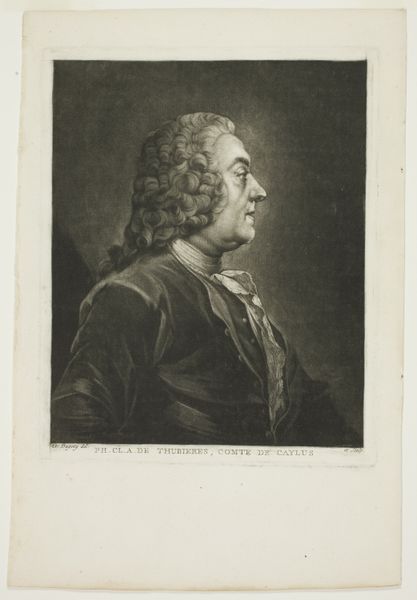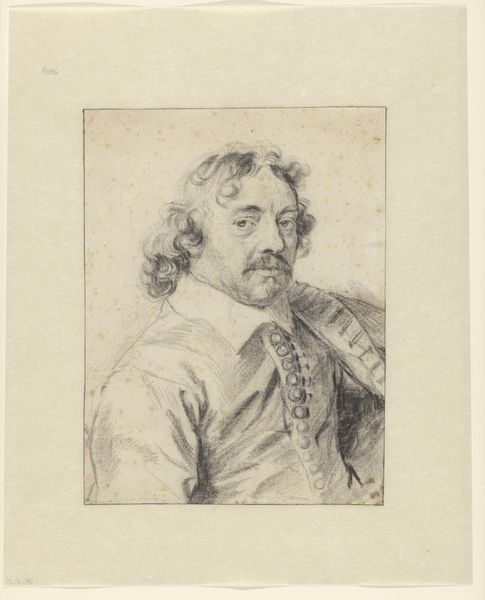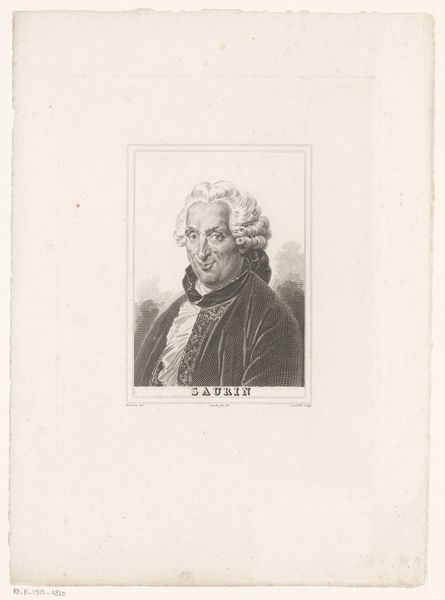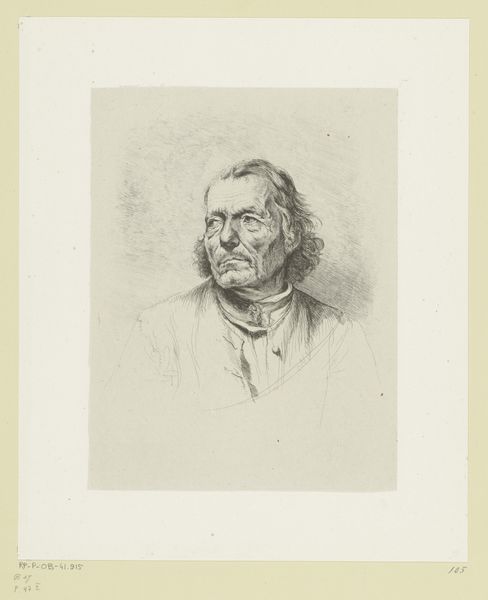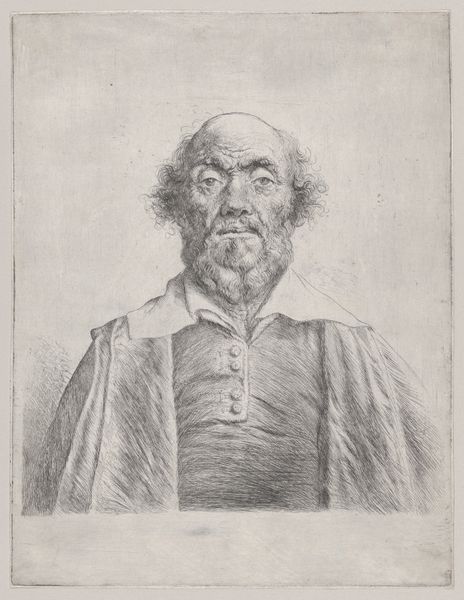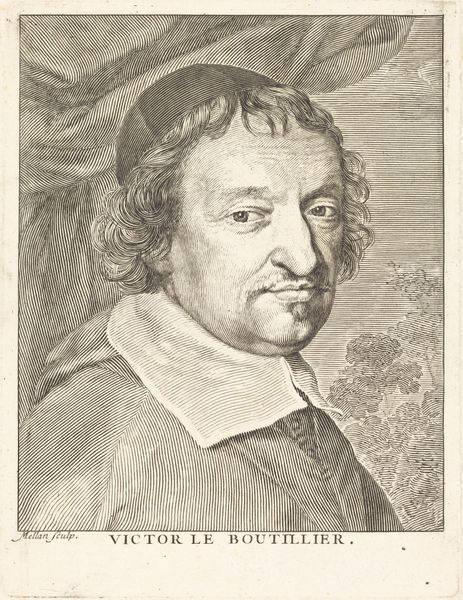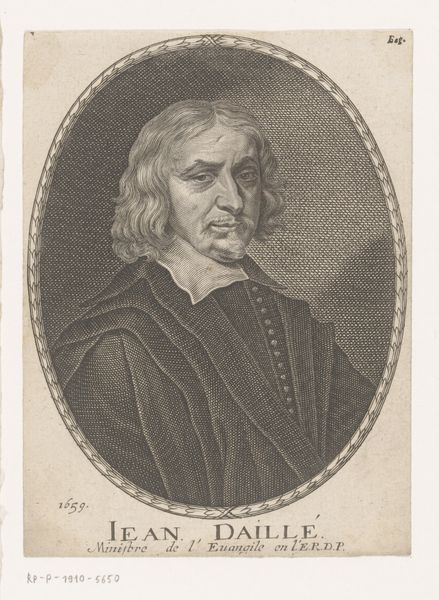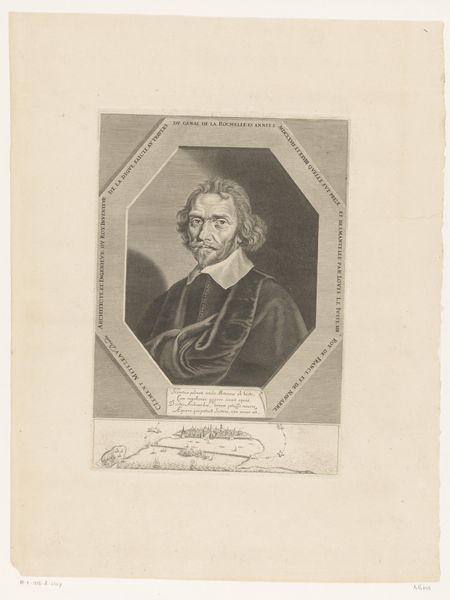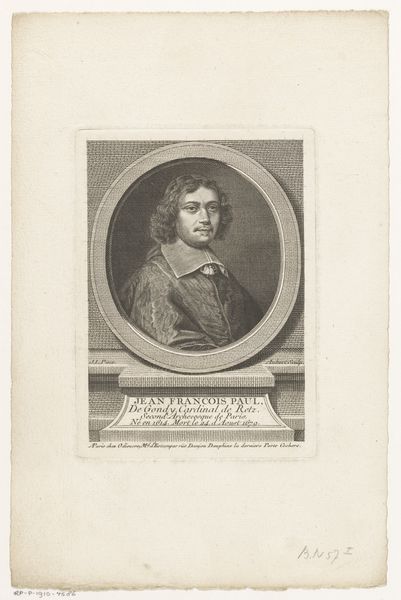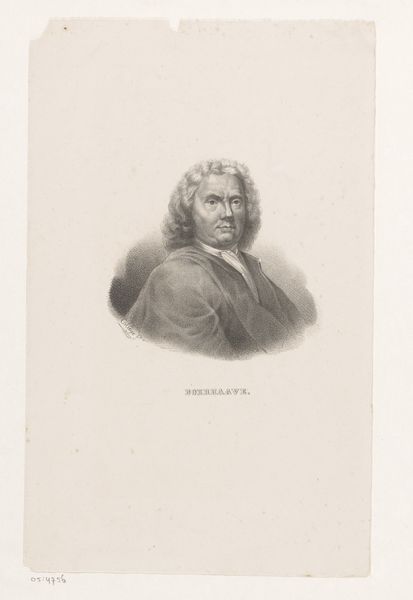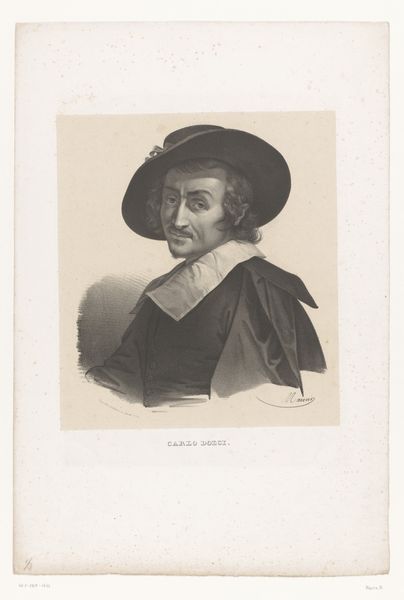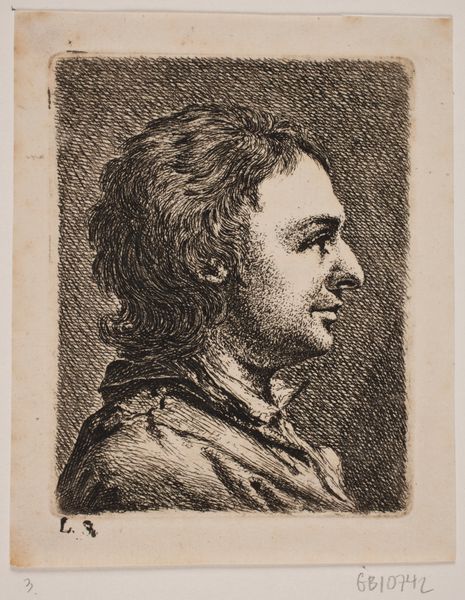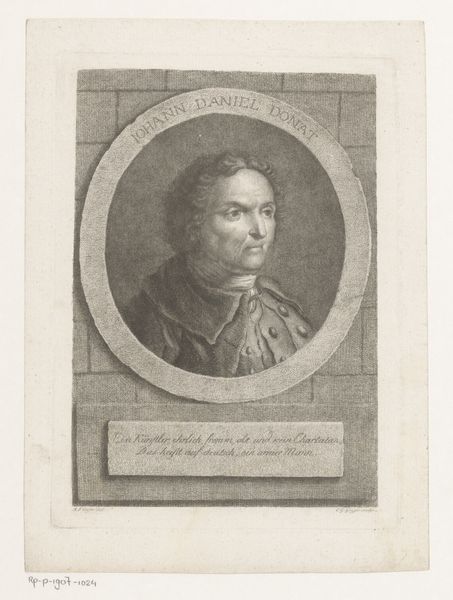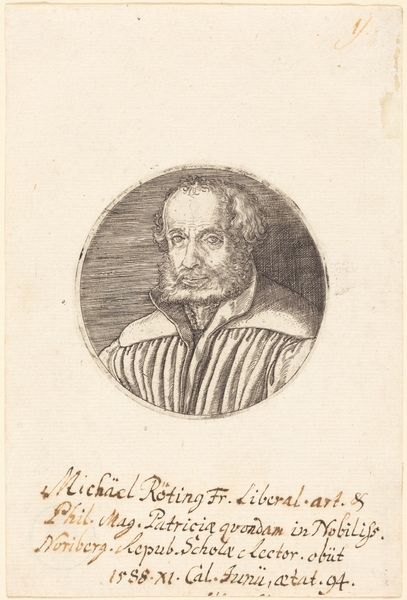
drawing, ink
#
portrait
#
drawing
#
neoclacissism
#
self-portrait
#
ink
#
portrait drawing
Dimensions: height 208 mm, width 160 mm
Copyright: Rijks Museum: Open Domain
This is Joseph Abel's self-portrait, an etching capturing his likeness with a penetrating gaze. The fall of the cloak around Abel’s shoulders echoes the classical Roman portraiture, where the draped cloth indicated status and intellect, a visual claim to seriousness and purpose. We see this motif repeated through the Renaissance and Baroque periods, each time adapted to signify the subject’s virtues or aspirations. In ancient times, togas denoted citizenship and civic duty, but observe how Abel’s cloak transforms into a symbol of artistic calling, a testament to personal expression. Consider the psychological weight of self-representation. Abel, with his furrowed brow, presents himself as a man of contemplation. The act of creating one's own image is not merely a reflection but also a declaration, a dialogue with posterity. It is a powerful act that engages us on a subconscious level, prompting us to consider our own fleeting existence and how we, too, leave our mark on the world. Like a snake shedding its skin, this symbol resurfaces, its meaning molded by the cultural and personal contexts of each artist and era, perpetually evolving while still tethered to its origin.
Comments
No comments
Be the first to comment and join the conversation on the ultimate creative platform.
